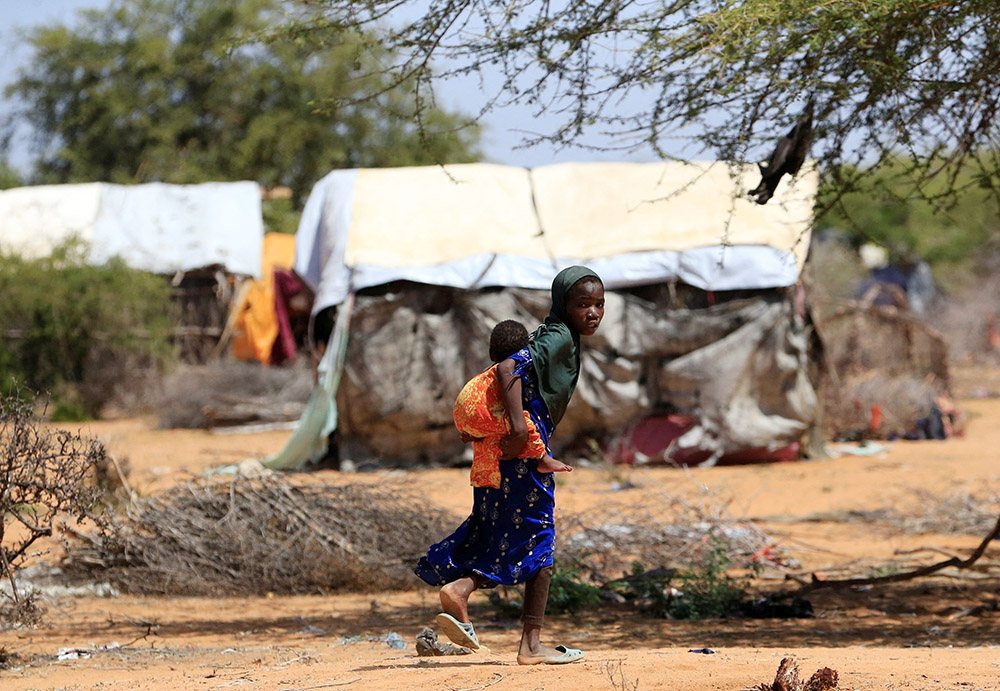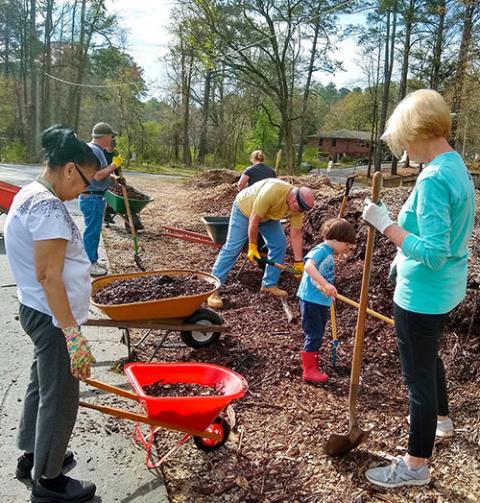
A young Somali refugee fleeing drought carries her sibling as they walk in the new arrivals area of the Hagadera refugee camp in Dadaab, near the Kenya-Somalia border, in Garissa County, Kenya, Jan. 17. (OSV News/Reuters/Thomas Mukoya)
The American Catholic Church is poised to lead the response to new science on ecological justice released last week. A groundswell of local action is needed to respond with the urgency that justice demands.
"Safe and just Earth system boundaries" is a groundbreaking paper in the journal Nature that describes a set of measurable limits on climate change, biodiversity and other planetary systems that will protect the most vulnerable of our brothers and sisters.
The paper published May 31 expands on work from 2009, when scientists outlined nine indicators of planetary health. Defined by hard numbers on physical phenomena that can be observed and measured, these indicators define "a safe operating space for humanity." They have helped shape such documents as the Paris climate accords and the Convention on Biological Diversity.
Now, the authors of the 2009 paper have returned with a revised approach. They newly acknowledge that our sisters and brothers do not experience safety equally. When considering climate change, for example, the "safe operating space" for a subsistence farming community in sub-Saharan Africa is much tighter than it is for a wealthy community in the United States.
Advertisement
The authors have updated their original boundaries with this thinking in mind. Their revised limits are "safe and just" boundaries. We must stay within these limits to protect not just the average person, but the person who is most vulnerable to disaster.
Tragically, humanity has already crossed every boundary but one. As people of faith with a prominent public presence, American Catholics are called to lead the response to this science.
Our response stands on a solid foundation. Creation care has a rich history within the church, with women religious in particular long leading the way in developing broad-reaching initiatives to care for their land while raising a prophetic voice for creation.
Since the publication of Pope Francis' 2015 encyclical, "Laudato Si', on Care for Our Common Home," action has quickened. On the international level, countless communities have participated in the Laudato Si' Action Platform and watched the film "The Letter."
The new paper in Nature came on the heels of Laudato Si' Week, a celebration of the encyclical's publication anniversary that was observed in hundreds of communities. Laudato Si' Week also saw the issuing of a new papal statement on the Season of Creation, an annual celebration of prayer and action for creation.

Parishioners of St. John Neumann Church in Lilburn, Georgia, work on the parish garden in 2020. The parish has saved $9,000 per year on energy costs by going green. (CNS/Courtesy of St. John Neumann Church)
National initiatives have also driven action. Catholic Climate Covenant's Catholic Energies program offers Catholic facilities a concrete way to reduce their energy bills and greenhouse gas emissions, and the Wholemakers curriculum for young adults is responding to a new passion for creation among young people.
Despite these good efforts, urgent action to care for creation has not yet been fully embraced by the church. Scholars who study the U.S. response to Laudato Si' say that we need a "bolder appropriation of Laudato Si' by American Catholics," that "few clergy are substantively engaging environmental issues," and that "quantitative data, experience, and conversation strongly suggest that US Catholics have not done enough."
Decisions made by church leaders may partially explain why. Although the majority of American Catholics support stricter environmental regulation, research conducted by Daniel DiLeo, associate professor and director of the Justice and Peace Studies Program at Creighton University, and others reveals that an astonishing minority of bishops have spoken about Laudato Si'.
A wave of local action is needed. The Season of Creation, which takes place Sept. 1-Oct. 4, is an opportunity to act.
Scheduling meetings in the next few weeks with clergy, ministry leaders and others allows time to plan an event for later this year. Screening "The Letter," organizing a creation prayer service or Mass, or advocating for justice are all good options. A celebration guide provides advice, a sample prayer service and more.
These local events can make a big difference, because Catholics play a prominent role in the national conversation. Twenty-one percent of the U.S. population is Catholic, with a close balance between left- and right-leaning viewpoints, and 30% of Congress is Catholic.
A groundswell of efforts by a united Catholic Church would be tremendously effective in driving national action on ecological justice.
Science is laying out the physical limits of justice. It's up to us to enforce them.








